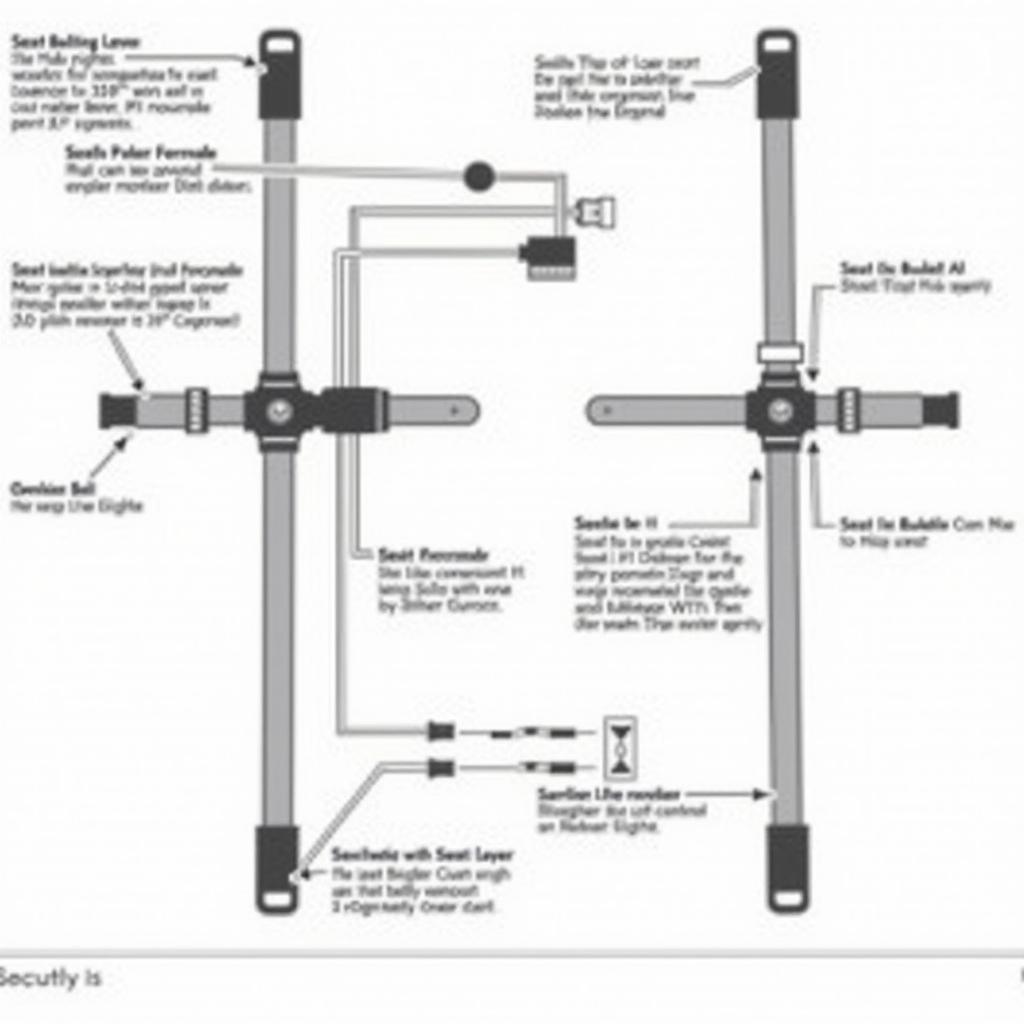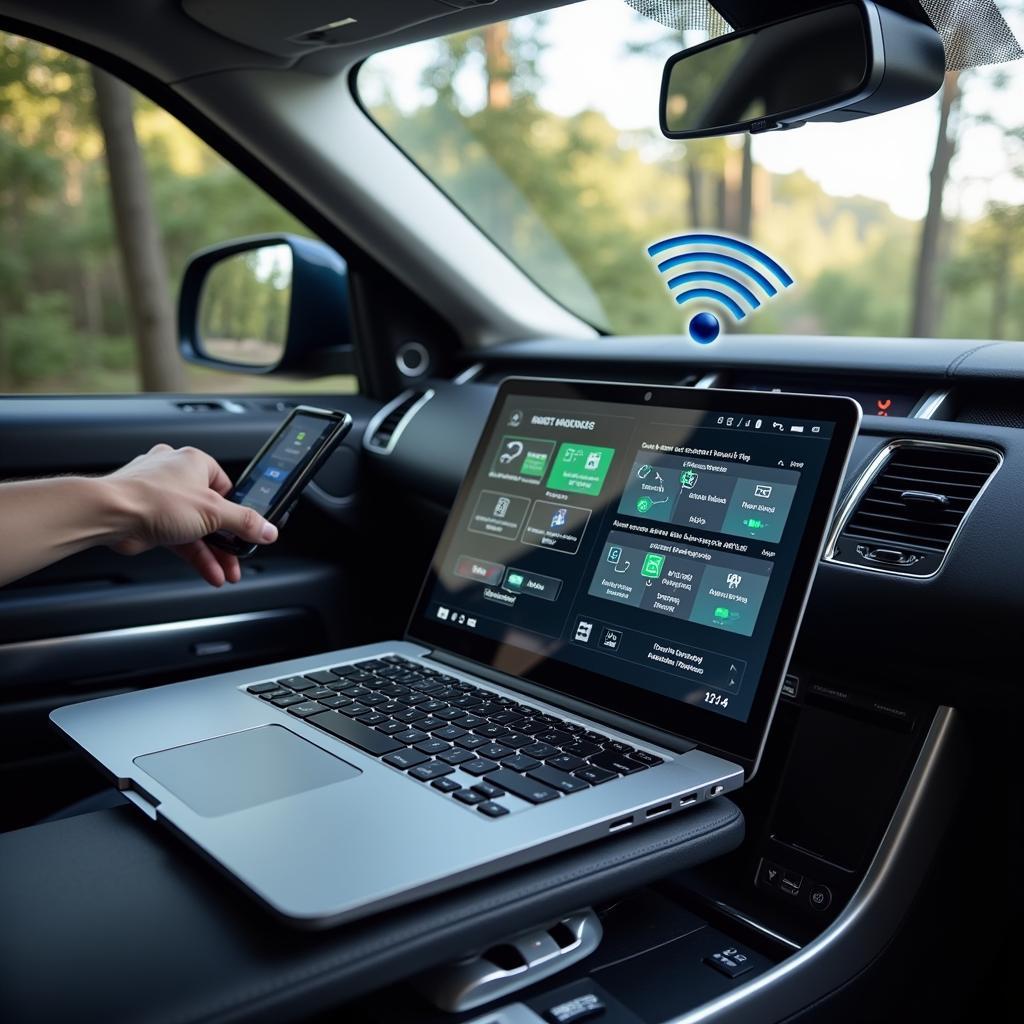The dreaded Range Rover Sport seat belt warning light can be a frustrating experience. Whether it’s a persistent chime, a flashing light on your dashboard, or both, this warning indicates a potential issue with your vehicle’s safety restraint system. This guide will help you understand the causes, troubleshoot the problem, and explore solutions for your Range Rover Sport seat belt warning.
Understanding the Seat Belt Warning System
The seat belt warning system in your Range Rover Sport is designed to ensure the safety of you and your passengers. It uses sensors to detect whether the seat belts in the driver and passenger seats are fastened. If a seat belt isn’t buckled when the vehicle is in motion, the system activates, triggering a warning light and an audible chime. This system is crucial for minimizing injuries in the event of an accident.
Common Causes of Seat Belt Warnings
Several factors can trigger the seat belt warning light in your Range Rover Sport. Understanding these common causes can help you narrow down the issue and find a solution. These include faulty seat belt buckle sensors, wiring problems, issues with the seat occupancy sensor, or even software glitches within the vehicle’s system.
Faulty Seat Belt Buckle Sensors
One of the most frequent culprits is a malfunctioning seat belt buckle sensor. This sensor, located within the buckle mechanism, detects when the belt is fastened. Over time, these sensors can wear out or become damaged, leading to false warnings.
Wiring Problems
Wiring issues within the seat belt system can also trigger the warning light. A loose connection, a broken wire, or corrosion can interrupt the signal from the sensor to the vehicle’s computer, causing the warning system to activate.
Seat Occupancy Sensor Issues
The seat occupancy sensor, usually located within the passenger seat, detects whether the seat is occupied. If this sensor malfunctions, it might incorrectly signal that the seat is occupied even when it’s not, triggering the seat belt warning.
Software Glitches
Sometimes, the seat belt warning might be caused by a software glitch within the vehicle’s control module. These glitches can disrupt the normal operation of the warning system, leading to false alarms.
Troubleshooting the Seat Belt Warning
Before rushing to a mechanic, you can try some basic troubleshooting steps to identify the cause of the seat belt warning.
-
Check the Obvious: Ensure all seat belts, including the driver’s and all passenger belts, are properly fastened. Sometimes, a slightly loose belt can trigger the warning.
-
Inspect the Buckles: Examine the seat belt buckles for any visible damage, such as cracks or bent metal. Try plugging and unplugging the buckle a few times to see if it makes a difference.
-
Check the Wiring (Visually): If you’re comfortable working with car electronics, you can carefully inspect the wiring under the seats for any loose connections, broken wires, or signs of corrosion.
-
Try a Seat Belt Extender (Temporarily): If you suspect a faulty buckle sensor, using a seat belt extender might temporarily bypass the sensor and silence the warning. However, this is not a permanent solution and should be used with caution.
 Range Rover Sport Seat Wiring Diagram
Range Rover Sport Seat Wiring Diagram
Solutions for Range Rover Sport Seat Belt Warnings
Depending on the cause of the issue, several solutions are available to fix the seat belt warning in your Range Rover Sport.
Replacing the Seat Belt Buckle
If the buckle sensor is faulty, replacing the entire buckle assembly is often the most effective solution.
Repairing or Replacing Wiring
Damaged or corroded wiring will need to be repaired or replaced to restore proper function to the seat belt system.
Addressing Seat Occupancy Sensor Problems
A malfunctioning seat occupancy sensor might require recalibration or replacement. This procedure often involves specialized diagnostic equipment.
Software Updates and Diagnostics
In cases of software glitches, a software update or diagnostic scan performed by a qualified technician can often resolve the issue.
Remote Diagnostics and Programming
For some Range Rover Sport models, remote diagnostics and software updates are possible. This cutting-edge technology allows qualified technicians to access your vehicle’s systems remotely, diagnose problems, and even install software updates wirelessly, potentially saving you time and inconvenience.
 Remote Diagnostics Range Rover Sport
Remote Diagnostics Range Rover Sport
Conclusion
The Range Rover Sport seat belt warning, while initially annoying, serves a vital safety function. By understanding the potential causes and utilizing the troubleshooting steps outlined in this guide, you can effectively address the issue and ensure the continued safety of yourself and your passengers. Don’t ignore the warning – take action to resolve the problem and enjoy peace of mind on the road.
FAQ
-
Can I drive my Range Rover Sport with the seat belt warning light on? While technically possible, driving with the warning light on is not recommended. It indicates a potential problem with your safety restraint system.
-
How much does it cost to fix a seat belt warning in a Range Rover Sport? The cost depends on the specific cause. A simple buckle replacement might be relatively inexpensive, while more complex wiring repairs or sensor replacements can be more costly.
-
Can I fix the seat belt warning myself? Some basic troubleshooting steps, like checking connections, can be done at home. However, more complex repairs are best left to qualified technicians.
-
Is it safe to disable the seat belt warning system? Disabling the seat belt warning system is strongly discouraged. It compromises your safety and that of your passengers.
-
How can remote diagnostics help with seat belt warnings? Remote diagnostics can identify software glitches or sensor malfunctions that might be triggering the warning, allowing for targeted repairs.
-
What should I do if the seat belt warning light stays on even after the seat belt is fastened? This indicates a problem with the system. Consult a qualified technician for diagnosis and repair.
-
Can aftermarket seat covers interfere with the seat occupancy sensor? Yes, some aftermarket seat covers can interfere with the sensor’s operation, triggering false warnings. Ensure any aftermarket accessories are compatible with your Range Rover Sport.
